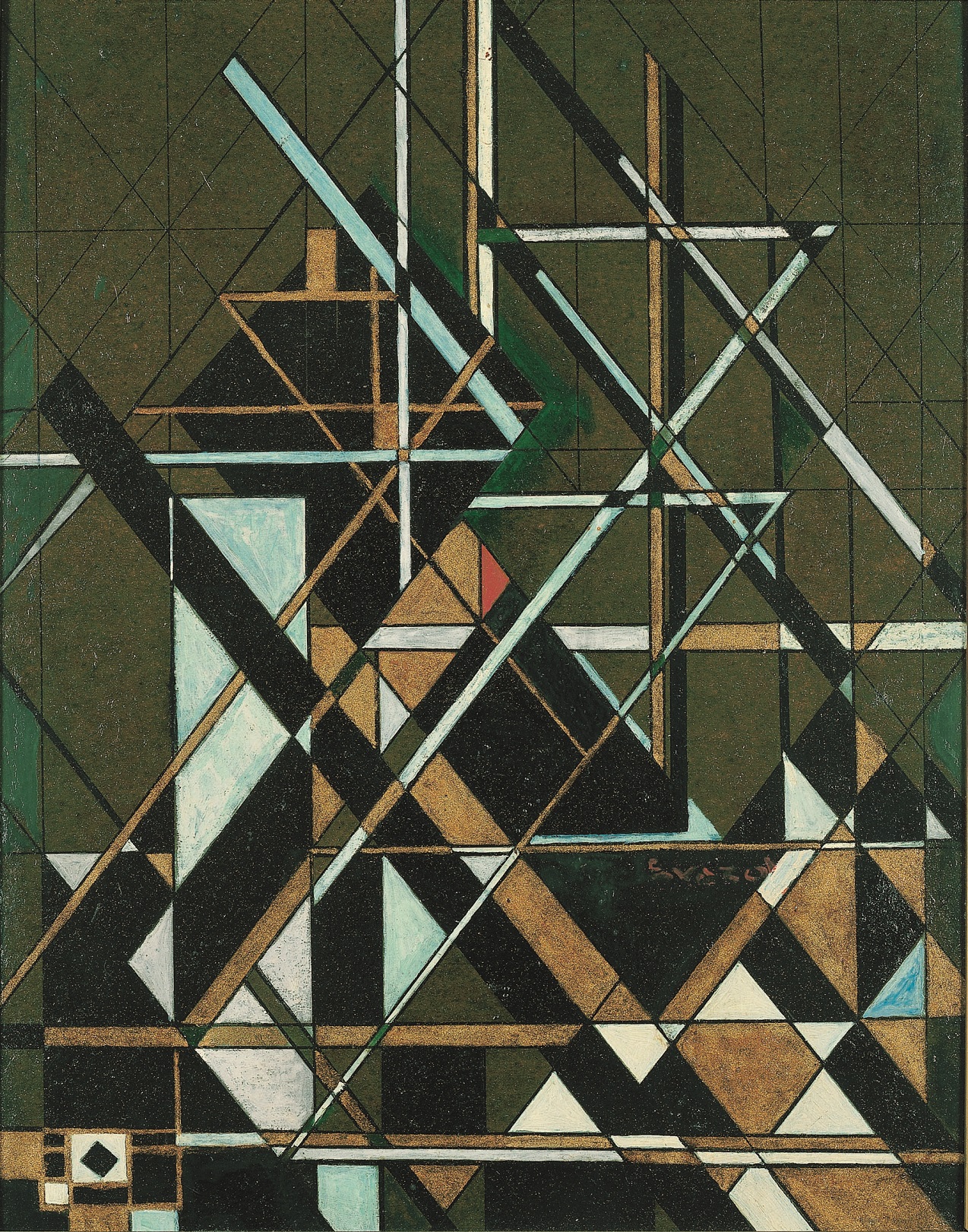Construction, 1932
 | Construction 1932 Oil on hardboard 34 x 26,5 cm |
At the beginning of the 20th century a great turn in art began. Painting and sculpture increasingly moved away from figurative to more abstract forms of representation. Art searched for new pictorial formulas and the artists of the time found a variety of answers.
André Evard was particularly fascinated by well thought-out and strictly geometrical picture constructions.
Signs that can already be recognized in earlier works and which led to a complete detachment from the figurative object.
This concrete-constructive work of Evard’s is particularly captivating because of the rhythmic arrangement of the construction lines.
With the diagonals crossing each other, the pictorial space is divided like a mosaic, creating a spatial structure of forms and colours that is motivically detached, yet harmonious in itself.
The hatching lines of vertical and diagonal strokes generate a geometric canon of forms of variably positioned triangles. This is extended by new geometric form schemes through the partial colour filling of several triangles.
A comparison with the works of Theo Van Doesburg (1883 – 1931) is obvious, since there was a very personal relationship between the two artists, which is also evident in a documented correspondence.
Throughout his life Van Doesburg tried in vain to persuade the Swiss to join the De Stijl movement, which he co-founded. But the latter vehemently refused.
He never wanted to be fixed and restricted in his art. For Evard was an artist with body and soul. Throughout his life he pursued his own artistic goals and at times patiently swam against the current.